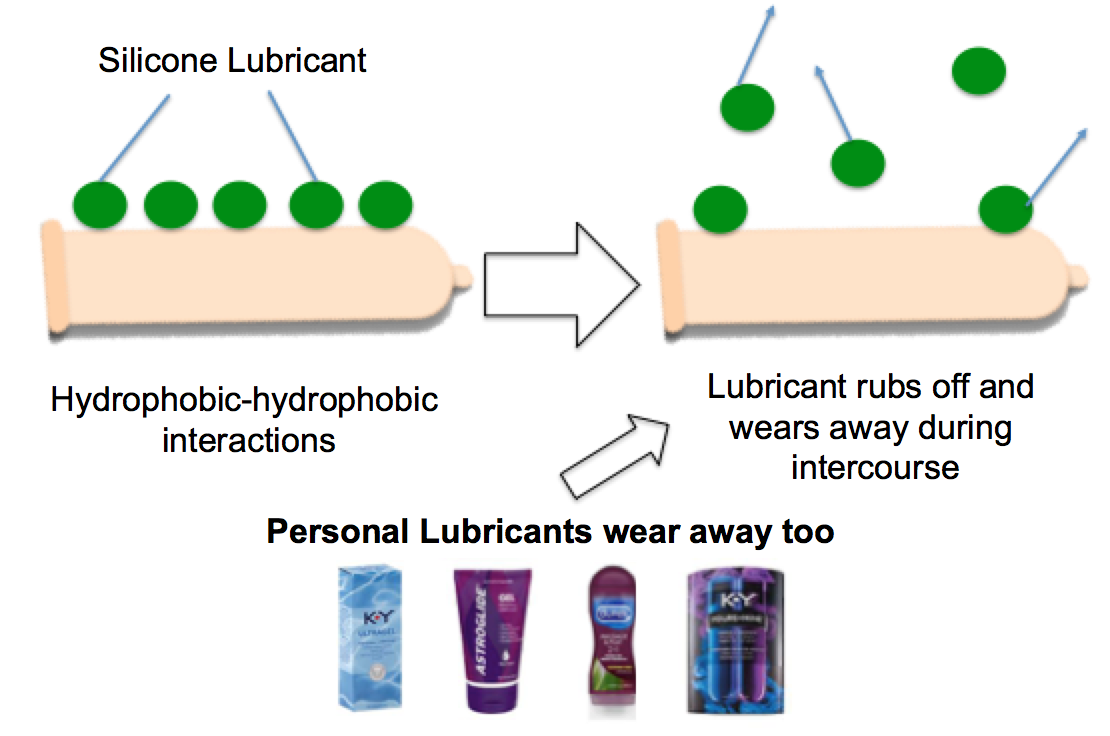
“Why do we need better condom lubricating technologies?”

Lubrication plays a critical role in user satisfaction during intercourse and in protecting the mucosal tissues by decreasing inflammation, irritation, and friction between the latex surface and tissue interface.
Insufficient condom lubrication can lead to:
- trauma
- high risk for condom breakage
- decreased satisfaction between partners
- inconsistent and improper condom usage
These major problems can lead increased risks for the spread sexually transmitted infections (STIs) and unwanted pregnancies.
“What are some commercially available products that can offer longer-lasting lubrication?”
Personal lubricants are available to provide additional lubrication for condoms. Yet, these products can be burdensome for constant reapplication during intercourse and messy during clean-up. Overall, there are still many challenges associated with these products and consumer satisfaction still remains low.
|
SILICONE FLUIDS |
Commonly used in the standard condom manufacturing processes, but the silicone included in the packaging is typically not sufficient to sustain the entire duration of intercourse. |
|
WATER-BASED LUBRICANTS |
Typically applied onto the surface of condoms, but easily pushed off the condom surface during penetration. The safety of components in these products are unknown with long-term exposure. |
| OIL-BASED LUBRICANTS |
Waterproof but known to damage latex condoms, decreasing effectiveness. |
You must be logged in to post a comment.